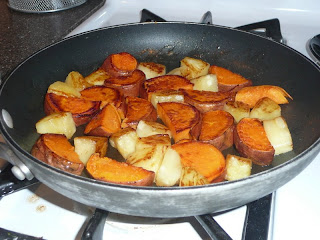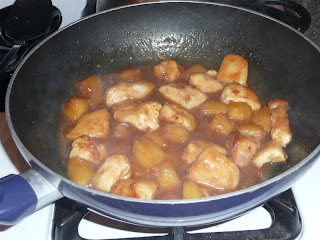

Sometimes it's the simplest of things that make the most magic in the kitchen (and on the dining table). Whipped cream is one of those to me. Granted, if you do not have a stand mixer (Kitchen Aid type) then this isn't exactly the easiest of things to make. You can do it with a hand mixer with the whip attachments, or even by hand with a balloon whisk... but I do not envy you that task. Having a Kitchen Aid myself, I make my own whipped cream frequently. That's not to say I never use the canned stuff. Honestly, if all you want is a dollop on some cocoa, that's the best way to go because the homemade kind has two problems with it. 1) It's hard to make a small batch- at least in the Kitchen Aid, because only a tiny portion of the whip attachment touches the cream if there is just a bit in the bottom of the big bowl and therefore it can take a long time to whip up, or just not work at all. So I always go with 1/2 a pint or more of cream to start. 2) Homemade does not last more than maybe a day before melting back and separating. So it's not like you can always have some handy in the fridge. There is no substitute for the homemade version though if you have an occasion to do it. Here's how I do mine:
I often use "Whipping Cream", which is cream with some emulsifiers and stabilizers added to help the process. If that weirds you out at all, go ahead and use regular Heavy Cream. The process will also be greatly shortened if you put your mixing bowl and whip attachment into the freezer for a few minutes before starting. Also make sure the cream is very cold- don't take it out of the fridge a minute before you're going to add it to your bowl. Starting with everything cold will make the cream whip up much faster- if doing this by hand do not skip this step.
Then it is simply a matter of putting the Kitchen Aid (or your arm!) on high speed and watching the magic happen. The cream will start to get very glossy and you will be able to see the whisk leave behind it's mark when things get going. Then, once the cream goes from glossy to a matte finish and starts standing up and pulling away from the sides of the bowl, stop the mixing. Remember- too far, and you have butter, not whipped cream.
The possibilities for your creation are nearly endless- as are what you can add to it. Of course a little sugar is generally a rule, but don't go overboard, cream itself is just too good to cover up entirely with sweetness. Any number of flavor additions are fabulous depending on where the cream is ending up, but vanilla extract, Gran Marnier, Kahlua or other liquors can really add something special. Again, just don't go overboard, and wait until the cream is just starting to thicken so you don't slow the process of whipping down too much from the beginning.
This time around, I went very simple. A little sugar, a little vanilla to top a glass of fresh berries. Sometimes it's the simplest things that are the most elegant and satisfying.










